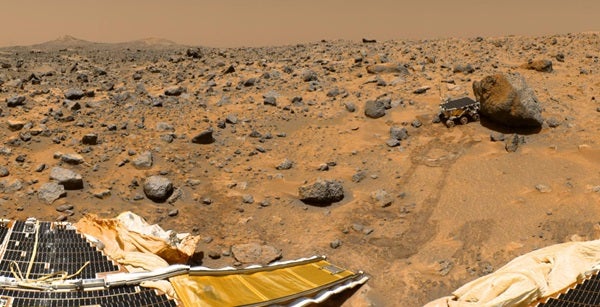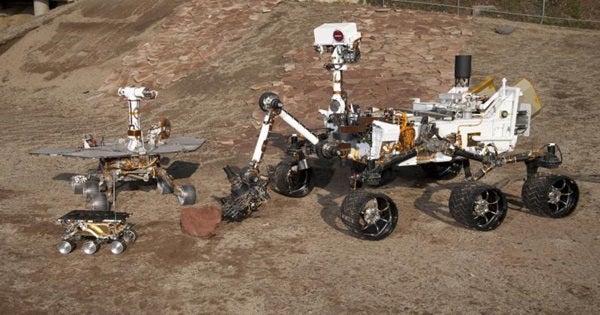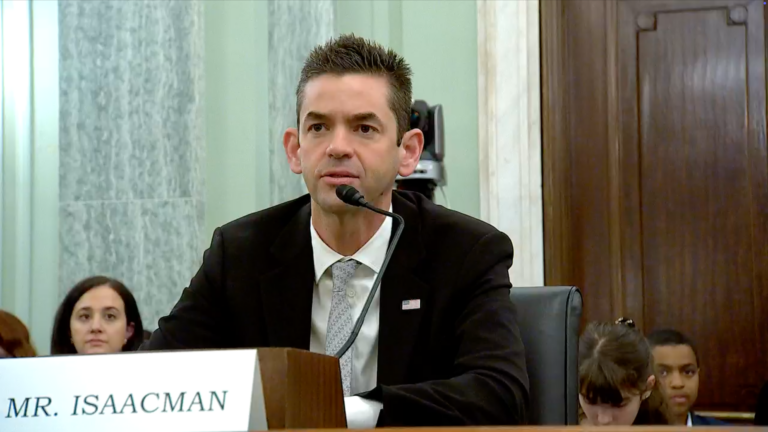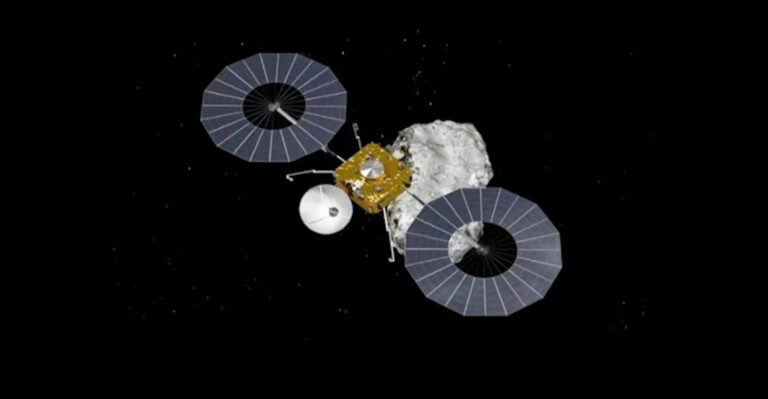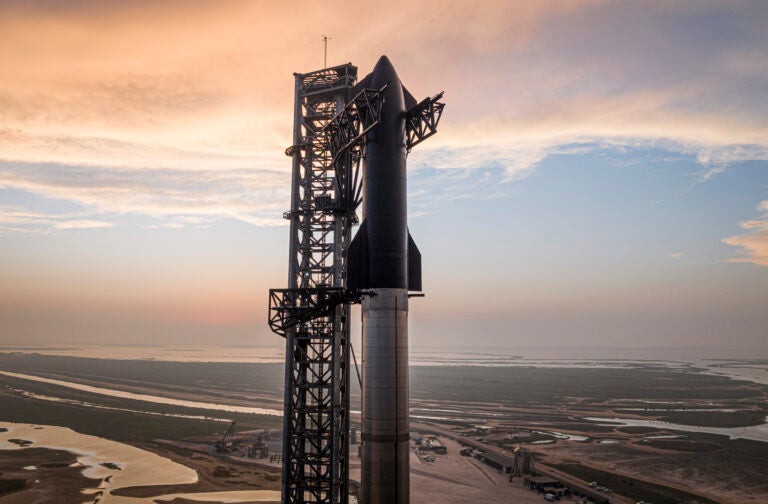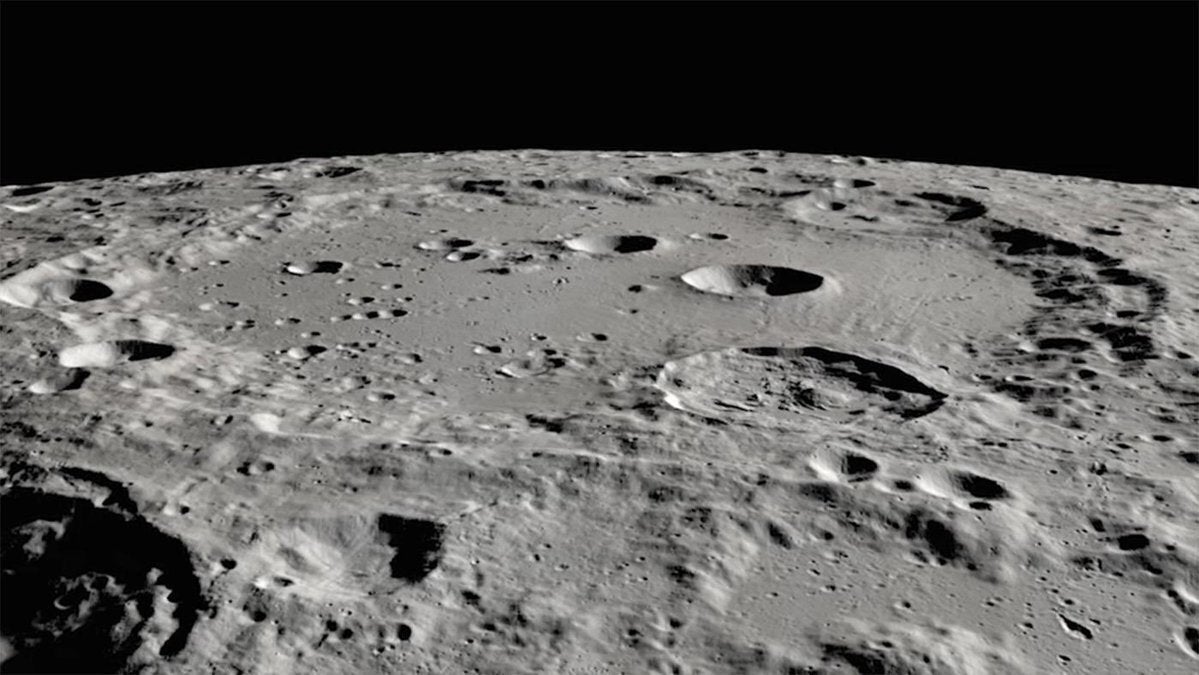When you hear the words “Mars rover,” you probably picture of one of the modern rovers like Perseverance or Curiosity: camera-covered, laser-toting, nuclear-powered monster trucks with wheels the size of barrels, trundling across Mars with all the urgency of a Jawa sandcrawler to study rocks and dust. Or, if you’re a little older, you might imagine their predecessors, the smaller, solar-powered twin Mars Exploration Rovers Spirit and Opportunity, who raced across Barsoom like Labrador puppies on a beach, hopscotching from crater to crater and going up and down more hills than the Grand Old Duke of York.
But none of those would have even been built if it wasn’t for the amazing success of a much smaller, much less-sophisticated rover named Sojourner that landed on Mars 25 years ago today, long before these modern machines. Not much bigger than a microwave oven, it weathered a daring landing cocooned inside airbags, then didn’t just survive but thrived on Mars, carrying out useful science and sending back fascinating pictures before its mission ended. Sojourner paved the way for the high-tech rovers currently rolling across Mars in the same way that the canvas and cane Wright Flyer Kitty Hawk paved the way for the fighter jets and airliners in our skies today.
The story of Sojourner
More recent entrants to the space enthusiast fold might be most familiar with Sojourner following the rover’s cameo in the film The Martian. Although the way it followed Mark Watney around the hab like a pet dog was as realistic as the film’s dust storm, it was sweet and it’s just one of many things I forgive that film for.
But what is the real story of Sojourner?
Launched Dec. 4, 1996, aboard a Delta II rocket, Sojourner was part of the Mars Pathfinder mission: a low-budget program to send a lander and a small test rover to Mars to see whether it was even possible to operate a wheeled vehicle on the Red Planet.
And Sojourner certainly was small. Weighing only 25 pounds (11.5 kilograms) and measuring just 11 inches (28 centimeters) high and 25 inches (63 cm) long, it really was the size of a microwave oven. But despite its diminutive stature, little Sojourner had big goals. It had front and rear cameras and a variety of instruments designed to perform limited but valuable science. Its most striking features, however, were its flat topside covered in metallic blue solar panels, which many thought made it look like a giant beetle, and its six small, spiky wheels, which gave the rover real Robot Wars appeal.
As nothing like it had ever been tried before, hopes weren’t exactly sky high that Sojourner would work. Many thought that if it did work, it wouldn’t work for long and would die after driving a couple dozen yards over seven or so sols (days) on Mars — its planned mission length. But after landing safely on July 4, 1997, Sojourner exceeded all expectations.
The Mars Pathfinder lander set down in an area called Ares Valles — which, by the way, is nowhere near, and looks absolutely nothing like, the place Watney digs the rover out of the sand in The Martian. Ares Valles is essentially the dried-up remains of a huge channel carved out of the surface of Mars by violent floods billions of years ago.
When Pathfinder’s first images came back, they showed an orange-brown landscape strewn with boulders, some of which were quite large and almost all of them bearing signs of tumbling, cracking, and splitting by flooding that once swept down the valley. Those images caused a sensation because Pathfinder was the first real space mission of the Internet Age — when NASA began posting images daily, there was so much interest in them that the fledgling Internet almost broke under the pressure. People around the world viewed and downloaded the images as soon as they appeared, which both gave the mission an incredible public profile and showed that there was a huge appetite for “live” images sent back from out there. Many of the space enthusiasts who now download the raw images sent back by Curiosity and Perseverance and use them to create beautiful panoramas and views, including myself, first got into image processing because of those first Sojourner photos.
During its time on Mars, Sojourner visited and imaged numerous fascinating rocks, many of which were given quirky nicknames by the mission team. Yogi was so named because it looked like the head of a bear — kind of — and had neighbors such as Pop Tart and Barnacle Bill. Two hills on the horizon were imaginatively named Twin Peaks and a wind-carved dust dune close to the landing site was christened Mermaid Dune.
Sojourner’s low-resolution (0.018° per pixel) cameras took images of these rocks, which geologists back on Earth used to study their structure and composition. But the best images of the mission were of Sojourner itself, taken by the Pathfinder lander. A camera mounted on a tall mast on the lander — yes, the same one that swings around pointing at hexadecimal characters drawn by Watney in the movie — took many fantastic images showing the rover trundling between rocks. Compared to the ultra-high-resolution images now being sent back by Perseverance, these photos were little more than snapshots taken by a tourist’s camera, but there’s a charm about them that more modern images don’t quite possess.
Sojourner survived for 83 sols on Mars and in that time, drove a distance of nearly 330 feet (100 meters), never straying too far from its lander, which served as a relay station for signals coming from or going back to Earth. Images taken from orbit in recent years still show the rover close to its lander. Many people want to bring Sojourner back to Earth one day, to be cleaned of dust and placed in a floodlit gallery in the Smithsonian. Personally, I think it should stay right where it is: on Mars, as a testament to the skills and expertise of the amazing engineers and scientists who got it there.
Not the first
But wherever Sojourner ends up in the future, I hope they make a space next to it for the first rover to land on Mars.
Wait, what?
Sojourner was the first rover to rove on Mars, but a quarter of a century earlier, the Russians sent the very first rovers to the Red Planet aboard their Mars 2 and 3 landers.
These ProP-M “nano-rovers” didn’t look like rovers as we think of them today. They were tiny, around the size of a large hardcover book, and weighed barely 10 pounds (5 kg). Essentially just small, square boxes with wide, flat skis instead of wheels, the plan was to lower them from the landers, attached to the end of spindly, 6-foot-long (1.8 m) robot arms. The rovers would then move around the lander at a tortoise-like top speed of 3 feet (1 m) per hour, still attached by a 50-foot (15 m) tether.
Unfortunately, neither rover did any roving. The first was destroyed when Mars 2 crash-landed on Nov. 27, 1971. A month later, Mars 3 reached the surface intact but stopped talking to Earth just under two minutes after landing, so its rover was never deployed. Future martian archaeologists may find its ProP-M still there on the end of its robot arm, hanging just a few frustrating feet above the rocks and dust it was supposed to trundle through.
Honoring the past
In December 2006, the Mars Reconnaissance Orbiter snapped high-resolution images of Pathfinder’s landing site. Those shots show the lander and its surroundings, as well as the likely location of the little rover’s final stopping point.
Sojourner may have passed out of the general public’s memory, but it never left that of NASA. While building Perseverance, engineers fitted a long, dark plaque on its chassis, engraved with the silhouettes of the rovers that drove across Mars before it. Behind Perseverance is Curiosity, with Spirit and Opportunity are behind her. And at the very start of the line? Sojourner.

